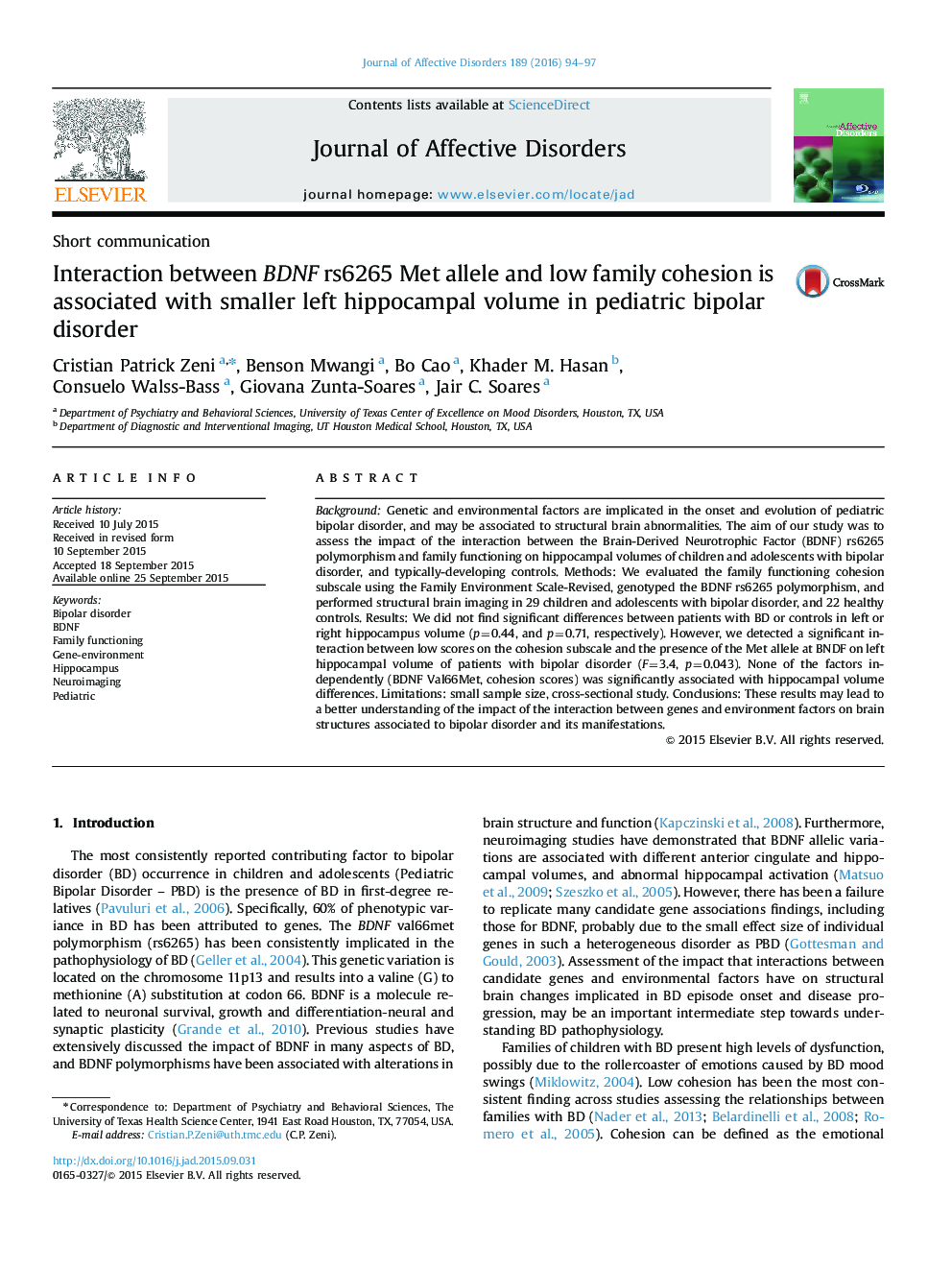| Article ID | Journal | Published Year | Pages | File Type |
|---|---|---|---|---|
| 6230843 | Journal of Affective Disorders | 2016 | 4 Pages |
â¢Genes and environment may impact brain anatomy in pediatric bipolar disorder.â¢We studied BDNF gene and cohesion effects in hippocampal volumes in PBD and controls.â¢We found a significant Met-allele and low cohesion effect on left hippocampal volume.â¢Gene-environment studies in PBD provide new insights on this severe mental disorder.
BackgroundGenetic and environmental factors are implicated in the onset and evolution of pediatric bipolar disorder, and may be associated to structural brain abnormalities. The aim of our study was to assess the impact of the interaction between the Brain-Derived Neurotrophic Factor (BDNF) rs6265 polymorphism and family functioning on hippocampal volumes of children and adolescents with bipolar disorder, and typically-developing controls. Methods: We evaluated the family functioning cohesion subscale using the Family Environment Scale-Revised, genotyped the BDNF rs6265 polymorphism, and performed structural brain imaging in 29 children and adolescents with bipolar disorder, and 22 healthy controls. Results: We did not find significant differences between patients with BD or controls in left or right hippocampus volume (p=0.44, and p=0.71, respectively). However, we detected a significant interaction between low scores on the cohesion subscale and the presence of the Met allele at BNDF on left hippocampal volume of patients with bipolar disorder (F=3.4, p=0.043). None of the factors independently (BDNF Val66Met, cohesion scores) was significantly associated with hippocampal volume differences. Limitations: small sample size, cross-sectional study. Conclusions: These results may lead to a better understanding of the impact of the interaction between genes and environment factors on brain structures associated to bipolar disorder and its manifestations.
